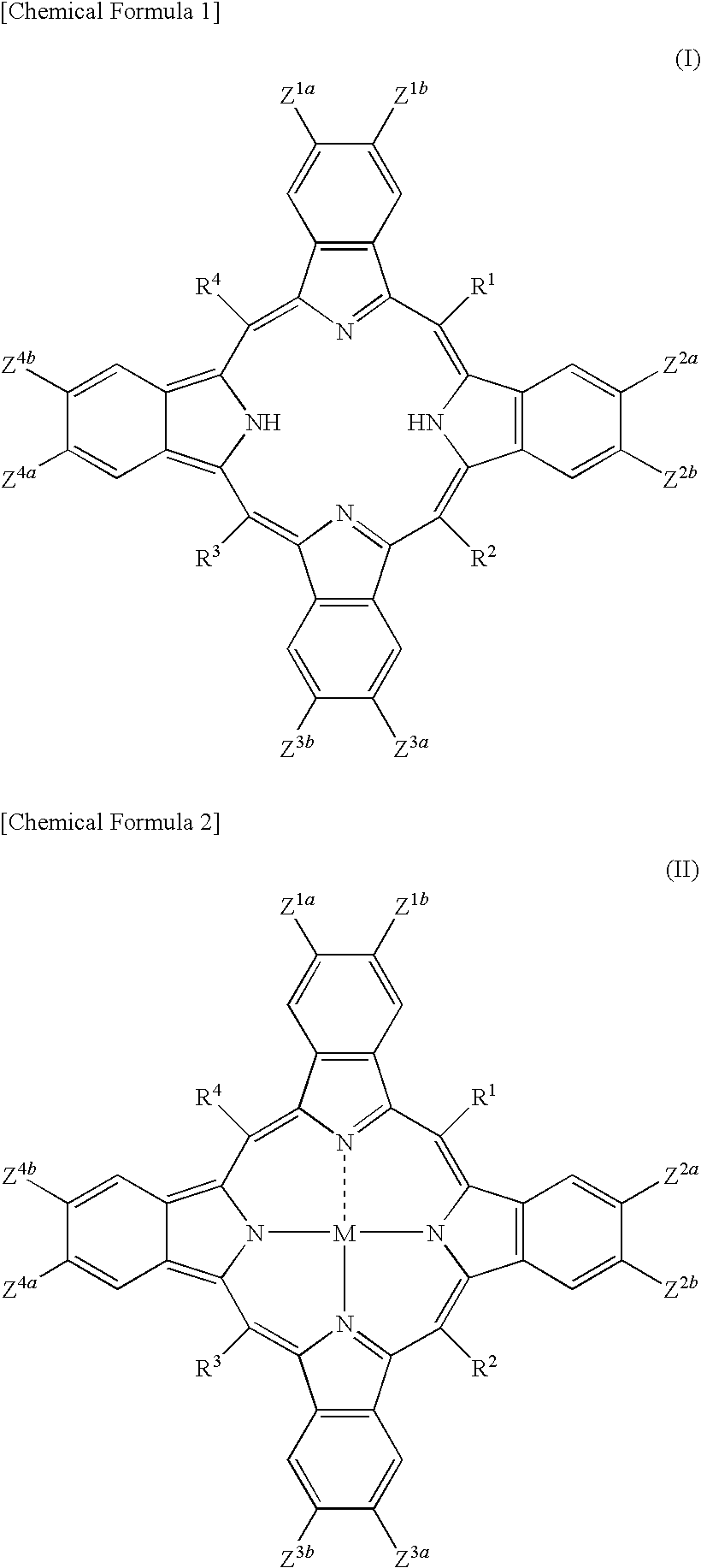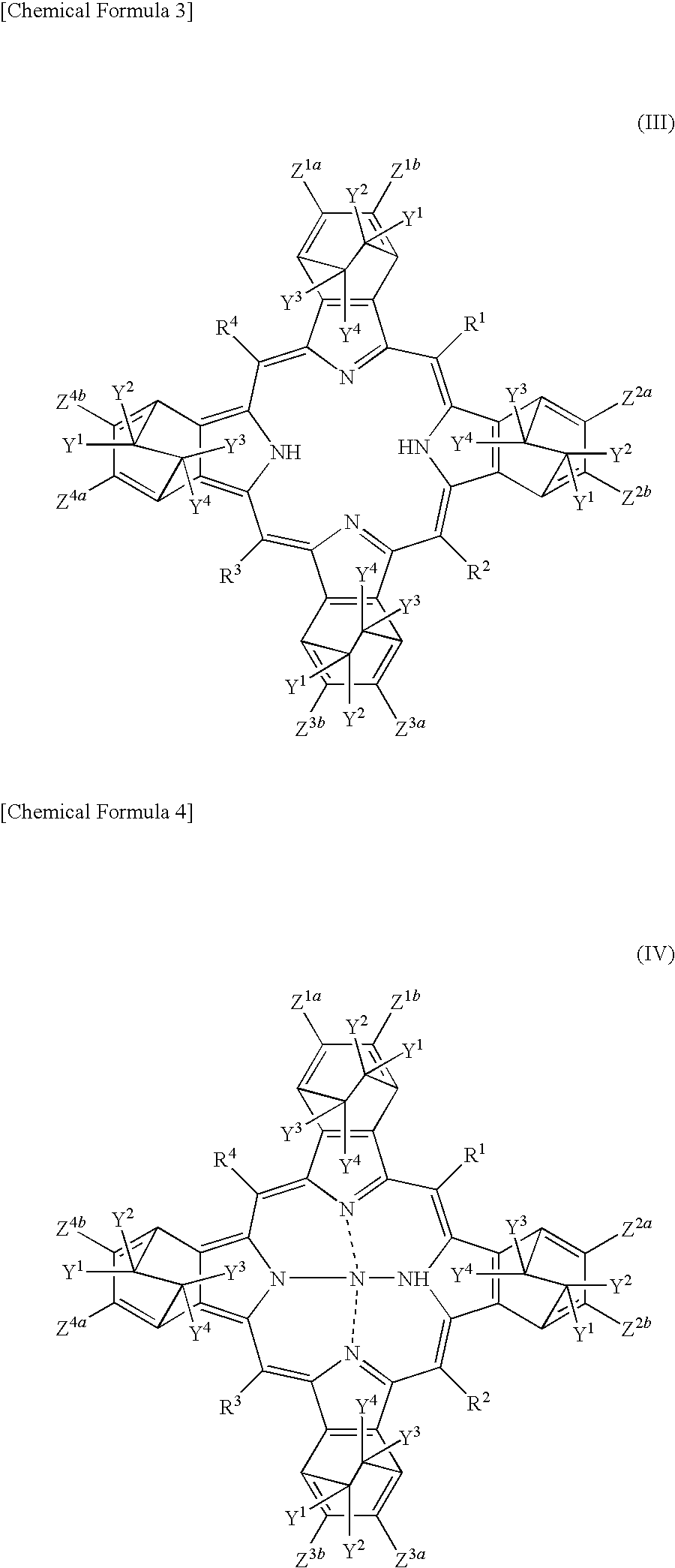Method for producing organic photoelectric conversion device and organic photoelectric conversion device
a conversion device and organic technology, applied in the field of organic photoelectric conversion devices, can solve the problems of not having a two-dimensional scanner developed for practical use, the contribution of solar cell energy saving technology is still questionable, and the conventional production method has a problem, and achieves excellent photoelectric conversion characteristics and high efficiency
- Summary
- Abstract
- Description
- Claims
- Application Information
AI Technical Summary
Benefits of technology
Problems solved by technology
Method used
Image
Examples
first embodiment
[4-2. First Embodiment]
[0213]FIG. 1 is a schematic sectional view of an organic photoelectric conversion device according to a first embodiment of the present invention. As shown in FIG. 1, organic photoelectric conversion device 1 of the first embodiment includes substrate 2, positive electrode 3, p-type semiconductor layer 4, electron donor layer 5, electron acceptor layer 6, n-type semiconductor layer 7, and negative electrode B. In this organic photoelectric conversion device 1, the above electron donor layer 5 and electron acceptor layer 6 form active layer 9. In the first embodiment, active layer 9 is formed of electron donor layer 5 and electron acceptor layer 6. p-type semiconductor layer 4 and n-type semiconductor layer 7 are not essential but are preferably included. It is preferable that the first embodiment uses the benzoporphyrin compound according to the present invention as pigment. As a latent pigment corresponding to the pigment, the soluble precursor according to t...
second embodiment
[4-3. Second Embodiment]
[0296]FIG. 2 is a schematic sectional view of an organic photoelectric conversion device according to a second embodiment of the present invention. As shown in FIG. 2, organic photoelectric conversion device 10 of the second embodiment includes substrate 2, positive electrode 3, p-type semiconductor layer 4, electron donor layer 5, partial active layer 11, n-type semiconductor layer 7, and negative electrode 8. In other words, organic photoelectric conversion device 10 is identical in structure to organic photoelectric conversion device 1 of the first embodiment except that electron acceptor layer 6 is replaced by partial active layer 11. Namely, the active layer of the present embodiment is formed of an electron donor layer and partial active layer. For this reason, it is preferable that the second embodiment also uses a benzoporphyrin compound according to the present invention as the pigment similar to the first embodiment. Further, as a latent pigment cor...
third embodiment
[4-4 Third Embodiment]
[0321]FIG. 3 is a schematic sectional view of an organic photoelectric conversion device according to a third embodiment of the present invention. As shown in FIG. 3, organic photoelectric conversion device 12 of the third embodiment includes substrate 2, positive electrode 3, p-type semiconductor layer 4, partial active layer 13, electron acceptor layer 6, n-type semiconductor layer 7, and negative electrode 8. In other words, organic photoelectric conversion device 12 is identical in structure to organic photoelectric conversion device 1 of the first embodiment except that electron donor layer 5 is replaced by partial active layer 13. Namely, the active layer of the present invention is formed of partial active layer 13 and electron acceptor layer 6.
[The Substrate, the Positive Electrode, and the P-type Semiconductor Layer]
[0322]Substrate 2, positive electrode layer 3, and p-type semiconductor layer 4 are the same as those of the first embodiment.
[The Partial...
PUM
| Property | Measurement | Unit |
|---|---|---|
| exciton diffusion length | aaaaa | aaaaa |
| temperature | aaaaa | aaaaa |
| temperature | aaaaa | aaaaa |
Abstract
Description
Claims
Application Information
 Login to View More
Login to View More - R&D
- Intellectual Property
- Life Sciences
- Materials
- Tech Scout
- Unparalleled Data Quality
- Higher Quality Content
- 60% Fewer Hallucinations
Browse by: Latest US Patents, China's latest patents, Technical Efficacy Thesaurus, Application Domain, Technology Topic, Popular Technical Reports.
© 2025 PatSnap. All rights reserved.Legal|Privacy policy|Modern Slavery Act Transparency Statement|Sitemap|About US| Contact US: help@patsnap.com



